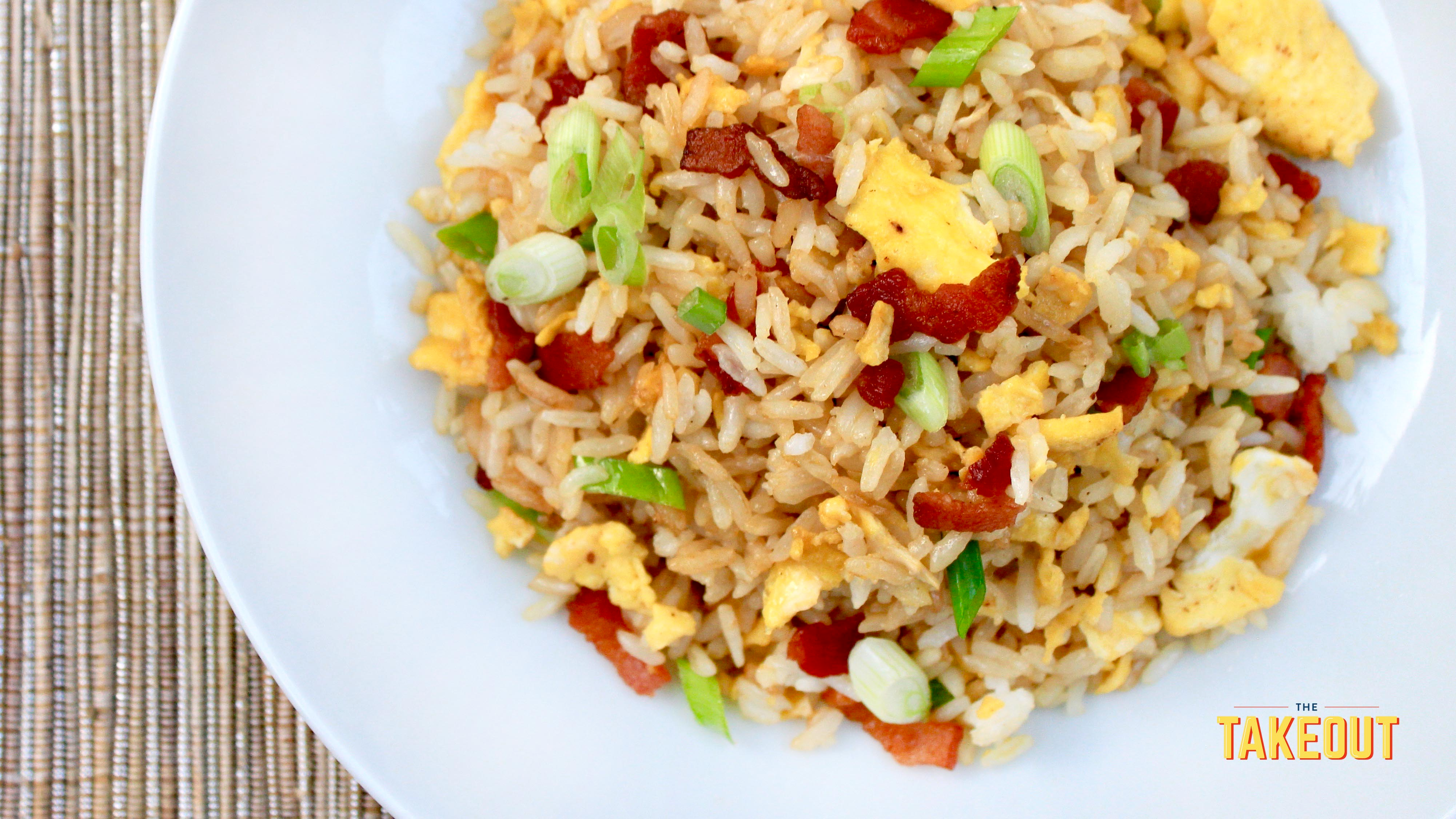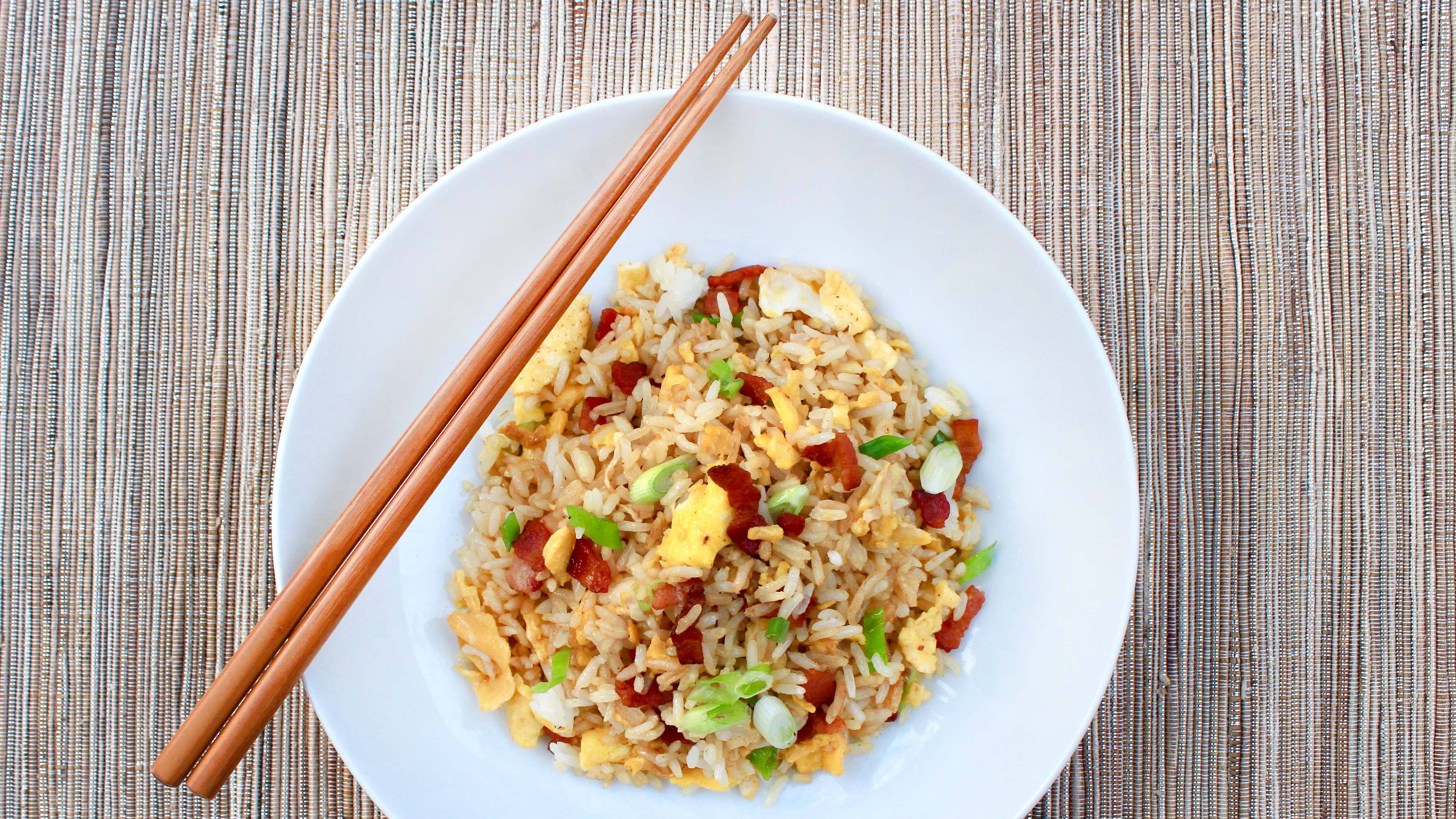How To Make Perfect Fried Rice (And I Mean Perfect)
I make really great fried rice. Before you silently judge me for this arrogance, know this: Behind this hubris lies the wisdom of my Chinese in-laws. When first dating my now-husband, I would fly to Seattle to visit his parents, and our family time would be spent with me taking copious notes on an iPad while they attempted to teach me to cook their family dishes. I was so taken with their food. I learned dumplings and stir-fries and five-spice braised beef. I learned how to make traditional dishes for winter's solstice and dishes for health and good luck. Yet of everything I've learned, it's their fried rice that has become my back-pocket dish.
Until my visits to Seattle, I had only ever eaten cheap takeout fried rice and didn't love it. It was overly salty, gluey and filled with vegetal nubs and rubbery meat, ribboned with dry shredded eggs. My in-law's recipe was different. Their fried rice was elegant and lightly seasoned; the grains were individual, kissed with soy sauce and toasted sesame oil. Their recipe uses bacon, though any salty meat would work. Spam is especially good too. It's a deceptively simple dish—deceptive because the fried rice, despite its spare appearance, involved many specific techniques and tricks honed through decades of cooking experience. When they taught me to make fried rice, they taught me their way, not meant to be altered or improvised upon. But there's a reason they did this: when I tried this at home, the fried rice turned out perfect. Every time. These were some of the secrets they passed to me, and now I pass on to you:
- When adding soy sauce, the goal is not to add so much that you discolor this dish. I go for a toasty, tawny look after the soy is stirred through, rather than a dark brown. This usually means no more than two teaspoons.
- Chances are if you buy soy sauce from an American grocer, it'll be Kikkoman, a Japanese brand (you can tell from the pear-shaped glass bottle with the red top). Try to seek out a Chinese light soy (and not dark soy, which is thick and sweet), though, because it does taste different.
- The eggs are important here: Rather than frying the rice in oil first, what I do is carefully pour the beaten egg base onto the medium-hot oil. The rice is then carefully folded into the eggs, taking care to not flatten the rice and eggs. The result is small puffy pillows of egg in your finished dish. Note the photo—there are no stringy, shaggy bits of eggs. Those are small Puffalumps that actually taste like eggs.
- Scallions are crucial for the onion-y component. They must be finely sliced on a sharp angle. My father-in-law insists they be cut this way—it adds a bit of beauty to a very simple dish. In the finished dish, the scallions poke through the rice like tiny jade spears. They are added at the very end to preserve their fragrance.
- I can't stress how important it is that you use 'old' rice. Not fresh and steamy from the rice cooker. I'm talking about leftover from a day or two before. If I don't have leftover rice, I'll make rice the morning of, spreading it out on a baking sheet to make sure it doesn't dry in large clumps.
- My in-laws add a small pouch of preserved Chinese vegetables (usually mustard greens or salted radish) that have been soaked and drained to reduce their saltiness. I love this as an add-in, but it can be hard to find those unless you go to an Asian grocery store. The packets usually are in Chinese and may helpfully just say 'vegetable' on them. They are about the size of an airplane peanut pack, with a photo of a slumped tangle of something fibrous on the front. The good news is they are so inexpensive you can afford to make a few mistakes until you find one you like (then keep a photo of it on your phone. What? That's totally normal). If you have it, add it. If not, the dish will not suffer.
For an easy dish with so few ingredients, I know the methods seem rather particular. I am reminded of that line from Legally Blonde: "The rules of hair care are simple and finite." So too are the rules of fried rice: don't use fresh rice, don't flatten the eggs and rice, don't over soy sauce it, and stir in the scallions off the heat. Like its takeout cousins, this fried rice tastes great cold the next morning too.
Perfect fried rice
- 2 slices of bacon, diced
- 2-3 scallions, sliced thinly on a sharp bias
- 3-4 cups leftover medium or long-grain rice, such as jasmine (no freshly steamed rice)
- 3 eggs, well beaten
- Salt
- 2 tsp. light soy sauce
- Toasted sesame oil

Heat a 12-inch non-stick skillet or wok over medium-high heat. Add diced bacon and sauté until crisp and golden. Remove from pan and leave about a tablespoon of rendered bacon fat in the pan. (Any more and your final product may become too greasy.)
Add beaten eggs, swirling to evenly coat the bottom of the pan. When the edges start to ruffle, add the rice evenly on to the eggs. Gently but expeditiously stir them around, breaking the eggs into small pieces. Do not press down on the rice, as you want to keep the fluffy texture. I use chopsticks to do the stirring, which also curbs the impulse to smoosh down with a spatula.
When the rice is warmed through, add bacon back in and stir through. If using the Chinese preserved vegetables add them in now too. Add a small pinch of salt to season.
Season with a teaspoon of soy sauce to start, and take a quick taste. If you like a bit of a deeper flavor add another teaspoon. Remember we are going for a light brown color, not a murky dark shade.
Turn off the heat, add scallions and stir through. Add a drizzle of toasted sesame oil, and stir gently to incorporate. Scoop into bowls and serve immediately.

